Mangrove MVD L-2 for Sony HDR-HC1 and HVR-A1 review
Setting up
As I always do, before spreading out every bit and piece of housing, I read through the instruction manual on setting up the housing. Even the simplest of housings have some sort idiosyncrasy that would make the most seasoned person look like a fool, much less myself! The instructions weren’t the best written (but how many are?) but it seemed pretty straight forward.
When I first opened the box and pulled the housing out, it certainly looked different from the usual cylinder shaped housings. I immediately noticed the latch system right away. It was unlike most of the other latch systems I’d seen. Instead on a release button to unlock the latch and the obligatory finger crunching ‘snap’ back, the Mangrove wing latch system seems easier. Simply flip the wing turnkey flap up, twist and unhook. However that doesn’t open the housing. One must also use the small lever that is supplied to pry the housing open. This extra step is due to the pressure seal design of the housing.
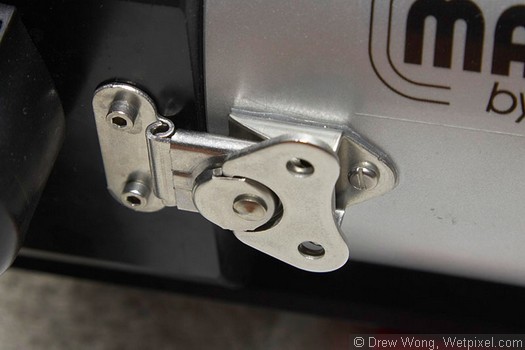
The winged latch which makes it easy to unlock the latches (but doesn’t open the housing)
The instructions were to put the housing on the monitor end down vertically and open the housing that way. This is probably due to the design layout where the handles and support legs are connected to the rear bulkhead and only a rubber stub supports the main housing in the front. To open the housing, you use the lever and insert the screw head side into the rear bulkhead hole provided and twist against the other screw to pop it open. (more on that in the field test section). The lever is designed to be attached by a lanyard to the housing, but I personally prefer not to have too many dangly bits on the housing, since lanyard can easily get caught while closing the housing.
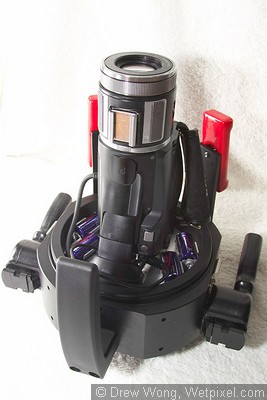
The housing has to be rested on the rear bulkhead to open/close the housing
(see conclusion for details)
Once opened, the housing rear bulkhead revealed the battery compartment and the two cables for the component video and LANC. The monitor is powered using (4) CR123a batteries and the LANC controls draws power from the camera itself (only 8 mA when camera is on and 0 when it is OFF). As I was going on a 40+ dive trip and the CR123a were rated to last 15 hours of normal use on the LCD, I had a choice to go out and buy an extra (8) CR123a or (4) rechargeable CR123 batteries and the charger. I couldn’t find rechargeable ones so I went with 8 disposable ones.
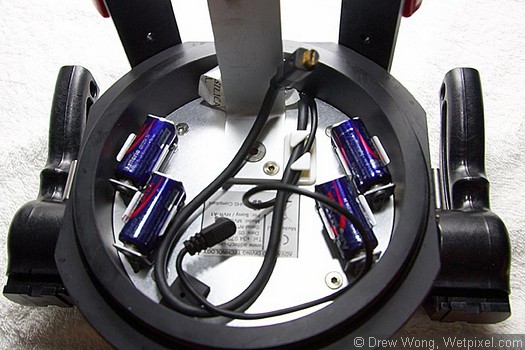
The rear bulkhead with the monitor back and CR123a batteries, component video and LANC cables
I realized quickly that my bigger QM71 battery would not fit in the narrow space and only the FM50 (standard with most HC series cameras) would. It is important to note that the cables are longish and can be trapped when closing the housing ( you won´t even be able to close the housing with the diameter of this cables, in other words it is not possible to trap the cables due to the design of this housing) so it’s crucial to wrap the excess cable length behind the camera battery and check for their protrusion before closing the housing.
The housing handles are easily installed with the use of a hex key. At the bottom of the rear bulkhead are two brackets which act as legs and also to put the included counterbalance weights. There are three different positions to place the weights depending on the balance. I left them in the middle position as it came from the factory that way and I thought it was optimal (later I changed it to the farthest position to balance the housing as the weight of the housing was very rearward).
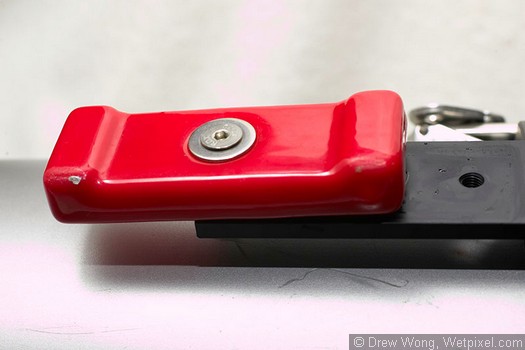
The optional weight system which helps balance the housing
Closing the housing was very easy. With the camera inserted and the rear bulkhead resting on the monitor, you just put the main housing tube on, aligning it to the release screw to the reciprocal hole in the bulkhead and/or the latch system. Just make sure the cables aren’t sticking out, push down and use the latch system to lock the housing. Also ensure that the camera is in camera mode for the LANC to work. (more on that in the field test).
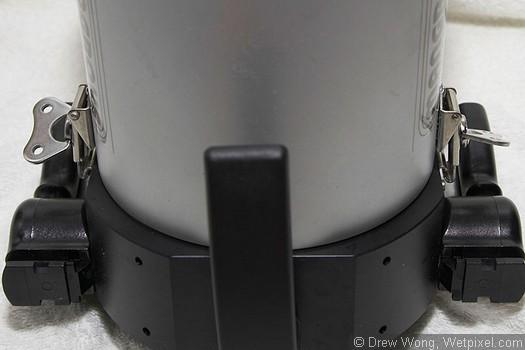
Closing the housing